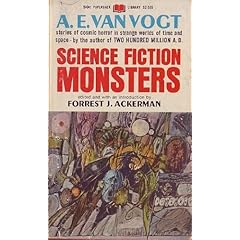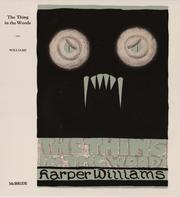
Fantomas by Pierre Souvestre and Marcel Allain
I blame Gahan Wilson.
I read “Everybody’s Favorite Duck” shortly after its release, back in 1988. It was wonderful: a fast-paced, entertaining adventure which featured a thinly-disguised modern Sherlock Holmes and Watson going up against a triumverate of villainy: The Professor, obviously meant to be Moriarty; The Mandarin, obviously meant to be Fu Manchu; and Spectrobert, a sadistic French master of disguise obviously meant to be….
I was lost. Fantomas may be a legend in France and many other countries, but in the U.S., his fame doesn’t begin to approach that of the previous two. In those days before ready internet access, I spent a little time trying to ascertain the “alternate identity” of Spectobert but eventually gave up.
A little more than a decade later, I reread the book (a rarity, and an indication of how much I enjoyed EFD) and was disturbed to realize I still had no clue who Spectobert was meant to be. I’d read hundreds of mysteries and thrillers by that time, but the character was unrecognizable.
Thankfully, the internet was available, and research provided the name: Fantomas, a legendary French villain and the star of dozens of books and movies.
When I recently found a copy of the first novel in the series, I knew I had to review it here.
The novel was written in 1911, and focuses on a complex overarching plot devised by the title villain. In the format which was to become common, the hero (Inspector Juve) attempts to capture the villain (Fantomas) by foiling crimes or, in many instances, merely reacting to the available clues at the scene of a successful criminal venture. Juve steadily progresses through the web of puzzles, duplicity and murder until he is able to confront the psychotic mastermind.
This story structure is still in use today, but at the time it was relatively fresh and intriguing. More to the point, the story is carried well, with the book’s primary failure being in the translation; after nearly a century, some of the French to English word choices are no longer ideal. An example: “Why, you are a man! How you have altered, my boy!” Even accounting for a post-Victorian speech pattern, it’s still odd to read “altered” instead of “changed” in that quote.
That said, there were two other negatives. One was a disappointment, the other a strain on credulity.
Where the story disappointed me was in the cruelty of the titular character. While there was violence done, for the most part it was enacted off-camera. Spectrobert is a psychopath who thinks nothing of roasting someone alive in an oven or murdering hundreds of children on a whim; Fantomas, in his first outing, is less flashy. Calculating and remorseless, he does not hesitate to murder but does not seem to kill excessively or randomly. I have read that he grows far more vicious in later novels; that would explain Wilson’s take on the character.
Where the story strained credulity was in the ability of all main characters to disguise themselves on the level of Lon Chaney, Sr. Fantomas is a supreme master of disguise. So is Inspector Juve. So is Jerome Fandor. So is M. Valgrand. All I can gather is that France, circa 1910, had many of the world’s best actors wandering around its streets and countryside.
Still, a solid thriller and a good introduction to a character who went on to be an international legend of evil, even if the actual horror quotient is a bit low in this initial outing.
Three stars out of five.

Science Fiction Monsters by A.E. Van Vogt
This collection from 1965 was introduced and edited by Forry Ackerman, a man who was intimately familiar with both science fiction and monsters. This alone lends the book promise; having it collect stories by sf legend Van Vogt merely heightens the expectations.
The subtitle of the book: Stories of cosmic horror in strange worlds of time and space
The back cover copy: Beware! Monsters at work! Prepare to have your flesh crawl with terror… your heart pound with fear… your eyes grow wide in horror as a host of hideous things - some hairy, some finned, some scaly, some metal (and some so strange they cannot be described in any Earth language!) - crowd in on you in the darkness of the night.
This, a knowledgeable reader might think, has promise. If so, it is a promise left unfulfilled.
Let me be clear: this collection is excellent. Ackerman selected representative stories from the middle era of Van Vogt’s career, made certain that all of them dealt with a creature or creatures around whom tension was generated, and presented them in a fashion which kept the reader entertained and interested. However, with all of that, he pulled a Hudson Hawk.
Hudson Hawk, for those of you unfortunate enough to remember, was a Bruce Willis movie which was released shortly after Die Hard 2 had cemented him as an action hero. The movie advertising made full use of that reputation, luring moviegoers into theaters under the premise that they were going to see a common man’s James Bond. Instead they found a goofy sendup of caper films. Audience reaction was decidedly negative.
Forry lured the buyer in with the promise of horror, and instead delivered only the mild tension of well-crafted adventure stories. From another editor, it might have been an honest mistake. From Ackerman, who knew horror as well as his contemporaries Robert Bloch or Alfred Hitchcock, it was a bait-and-switch.
Four stars out of five as a science fiction adventure collection. One star as a horror collection.

The Thing in the Woods by Harper Williams
This 1924 novel can be found anchoring the recent anthology Tales out of Dunwich, edited by Robert M. Price and produced by Hippocampus Press. It was included because of its influence on H.P. Lovecraft.
Your chance to read it is almost exclusively limited to that recent anthology. The original book was released in a small print run, primarily to libraries, and the author did not achieve significant fame; were it not for the efforts of S.T. Joshi in performing Lovecraft scholarship, it would probably still be virtually forgotten.
That would be a shame, because the novel was adequately written. It features a young doctor who accepts an offer to cover a traveling colleague’s practice in a country township. Shortly after arriving in the rural locale, the doctor encounters a number of sympathetic local characters and hears stories of an aggressive simian horror which may or may not be behind a series of violent deaths.
It is a fairly well-produced novel, which I wish I had enjoyed more. Tainting the story, however, was a derisive racism which permeates the narrative in the beginning and never fully leaves. I have read many stories from that era, and while non-Caucasians are often relegated to the roles of bit players, they are rarely denounced as often or as casually as they are in the pages of this book.
A point which disturbed me less, but was still intrusive, was the author’s tendency to drive the narrative through exposition. The constant exposure of plot points not by description of events but rather through strained and unbelievable conversation wore on me.
As a piece of historical interest for Lovecraft or Horror Literature scholars, the novel is noteworthy. As a story, the tale draws this reader in and kept me interested in turning the next page. I was left, however, with the conclusion that the writer was a mildly talented bigot.
As such, the novel may put off some readers.
Three stars out of five.

Cold Hand in Mine by Robert Aickman
It takes an uncommon talent to successfully evoke a dreamlike quality in a story without befuddling or annoying the casual reader. In the eight stories from this 1975 collection, Aickman manages to consistently produce tales which contain enough realism to ground the reader but which drift inevitably toward the unreal. Aickman pulls the reader with him into his vision, then disquiets the reader with the way the story progresses.
The result is a masterwork in what would have been termed in prior decades “quiet” horror.
The most famous piece is the one which opens the collection, “The Swords”. It serves as a nice representation of Aickman’s work. The story focuses entirely upon one individual and his travels; along his way, he encounters something (in this case, a woman who seems to derive pleasure from being brutally stabbed) that fundamentally affects him. If I seem vague about the description of the story, it is for two reasons: I don’t wish to reveal too much to people who have not yet read the story, and Aickman’s style and word choices do as much to conjure the surrealist imagery as the oddity of the plot.
The end product is ripe for analysis. Are the swords, as strongly implied, meant to be phallic representations? Or is that too casual a reading of the story? Does the tale linger in your mind? What feelings does it evoke, and why?
This sort of reaction is typical at the end of each offering in this book.
When a story can satisfy someone reading for effect and still work as an analytical piece, the author is doing a lot right, and Aickman does everything right with this collection.
Five stars out of five.
--Bill Lindblad
